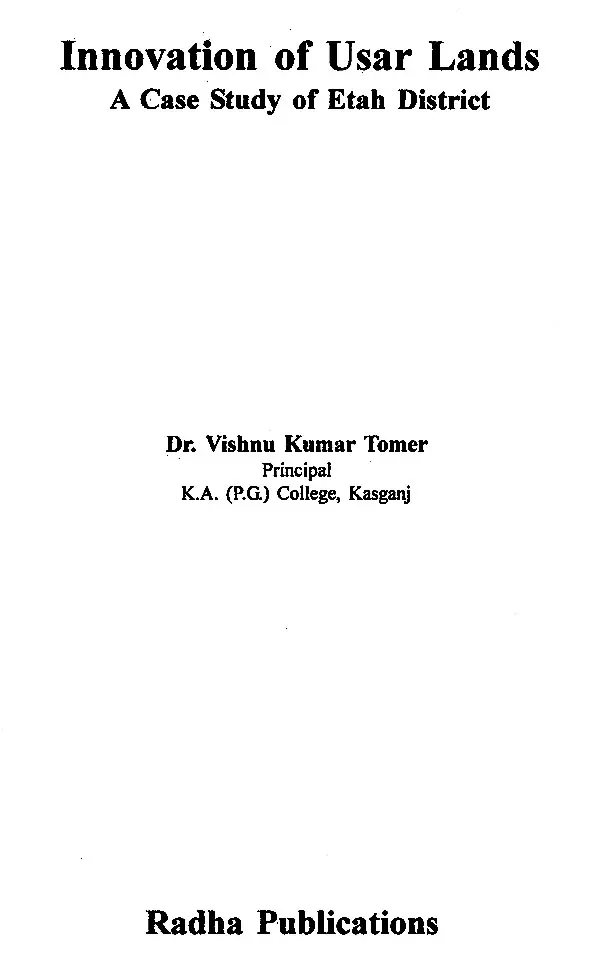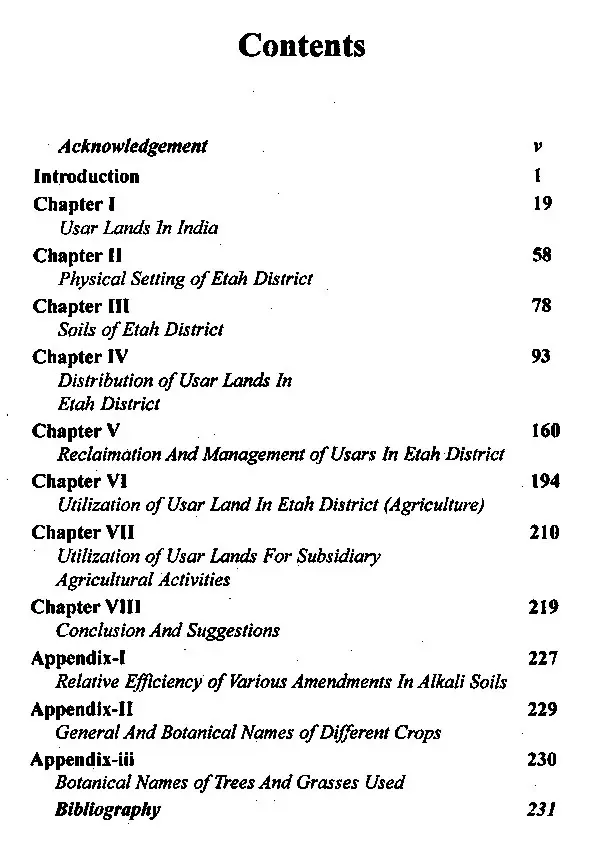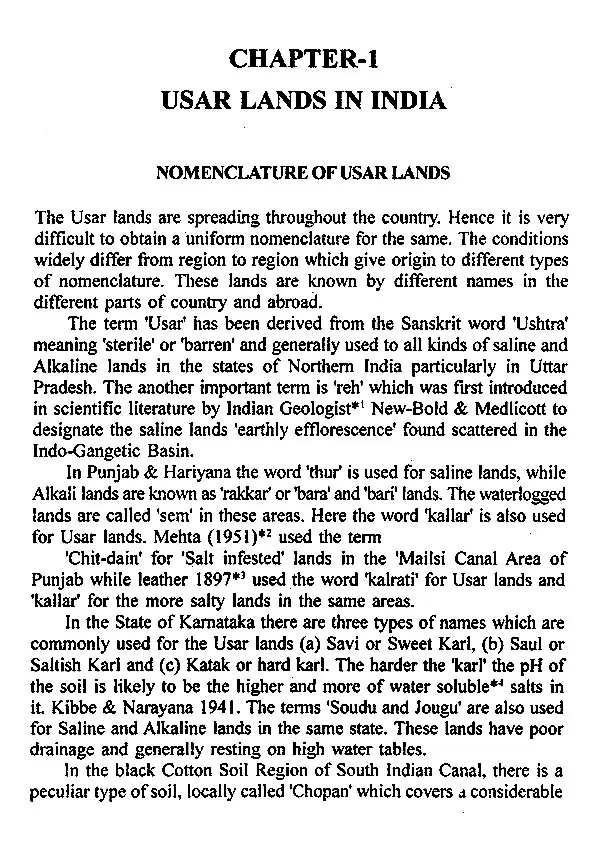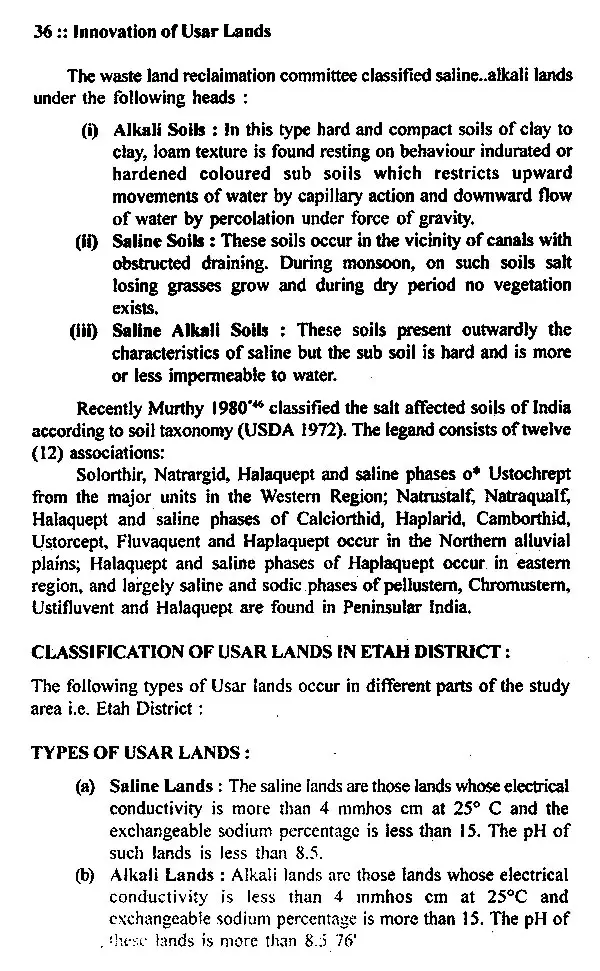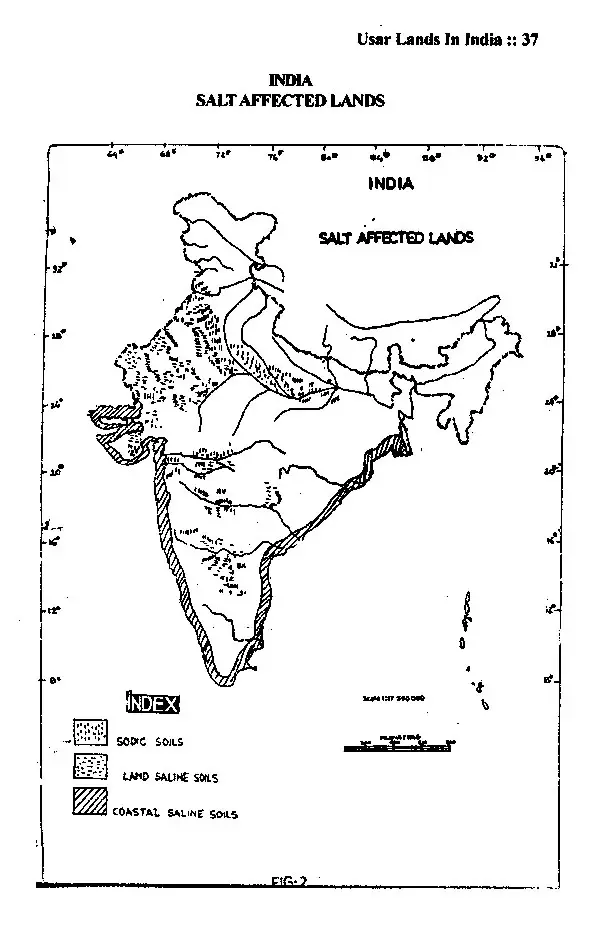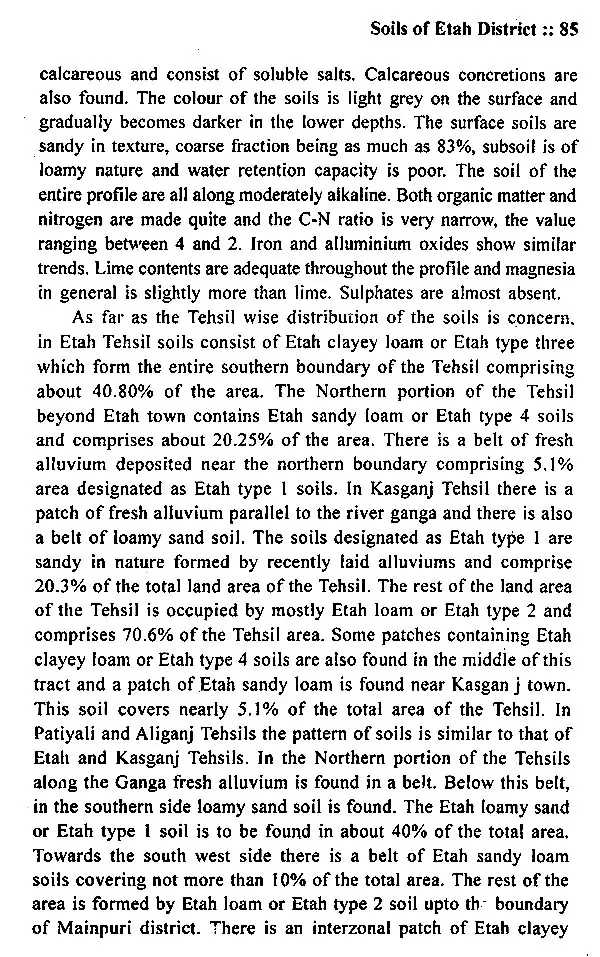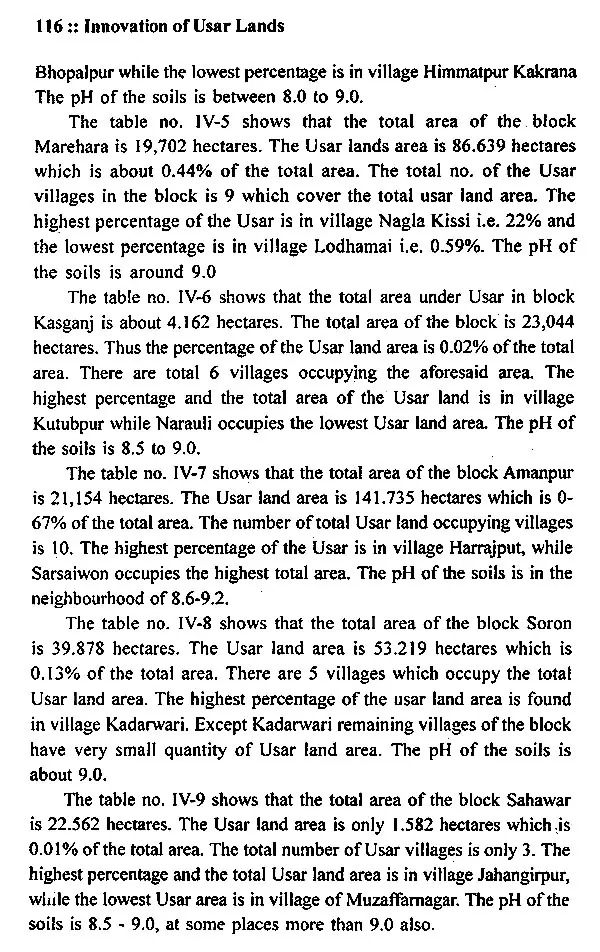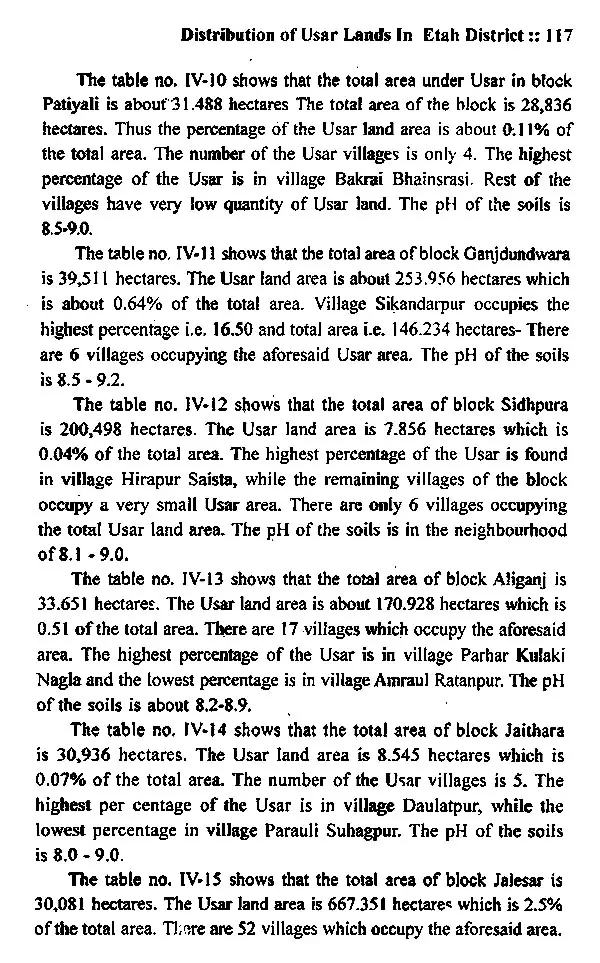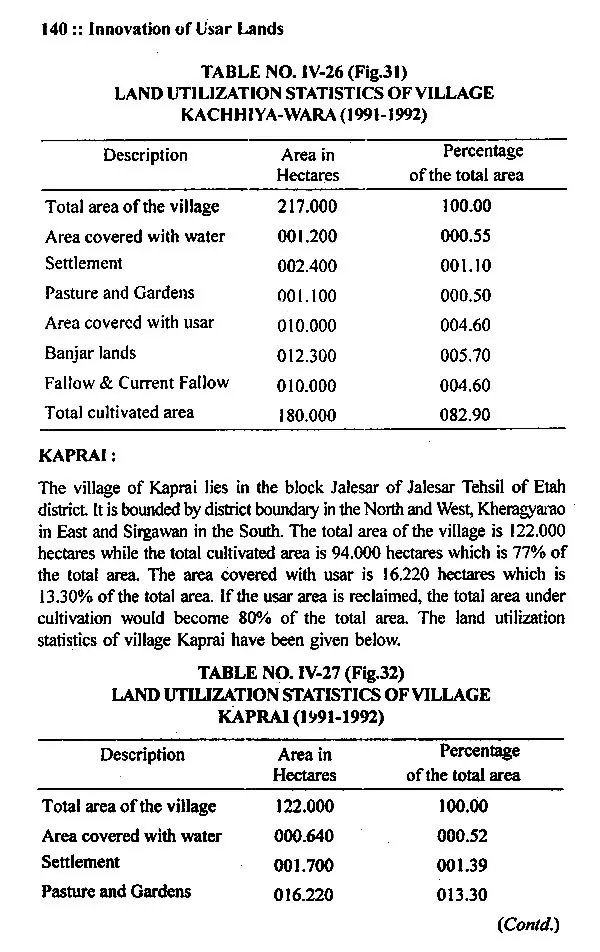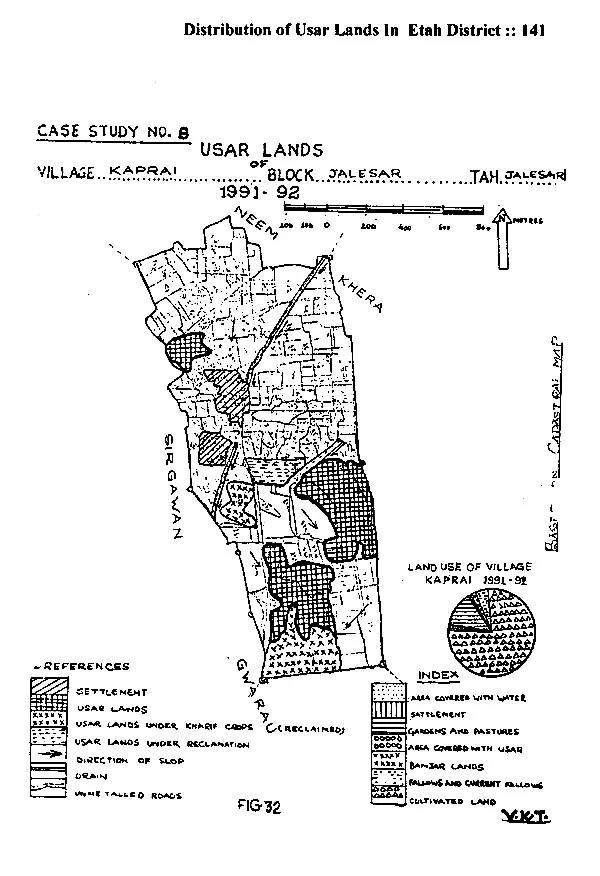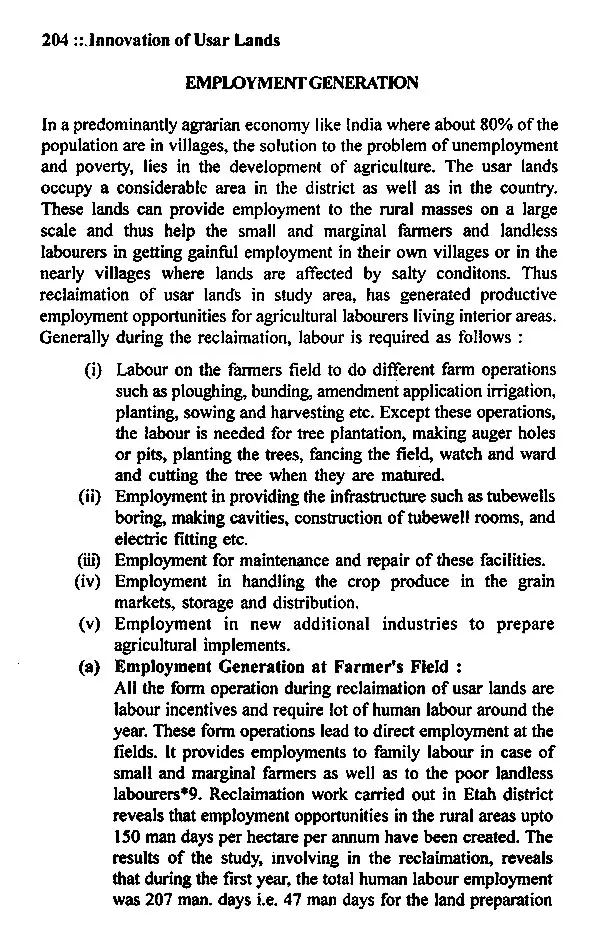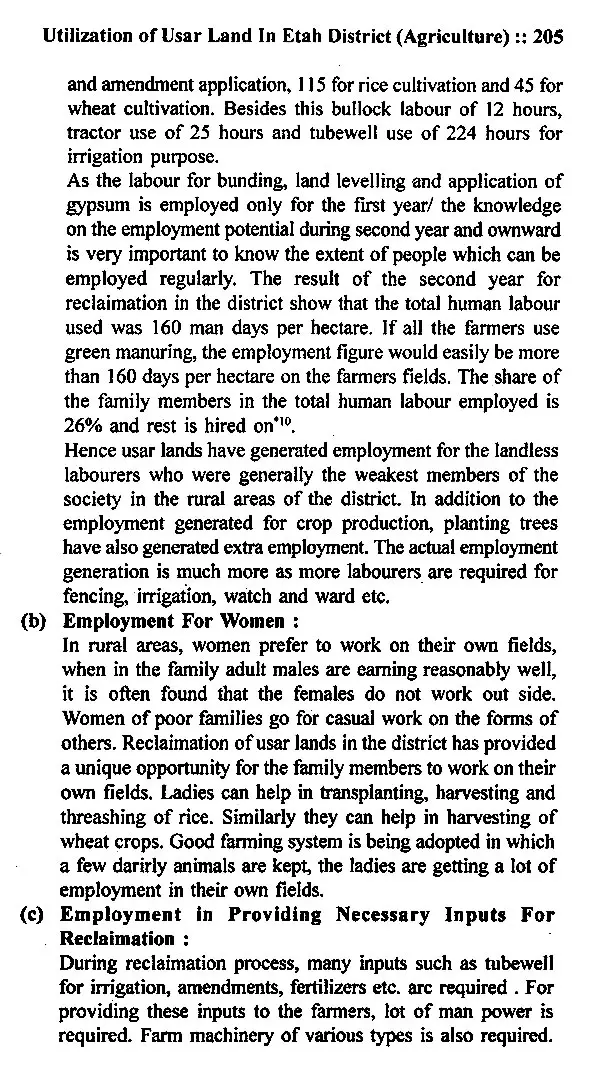
Innovation of Usar Lands (A Case Study of Etah District)
Book Specification
| Item Code: | UAI157 |
| Author: | Vishnu Kumar Tomer |
| Publisher: | Radha Publications, Delhi |
| Language: | English |
| Edition: | 2019 |
| ISBN: | 9789386439680 |
| Pages: | 240 |
| Cover: | HARDCOVER |
| Other Details | 9.00 X 6.00 inch |
| Weight | 390 gm |
Book Description
The fundamental problem which the world faces today, is the rapidly increasing pressure of population on the limited resources of land. India is also facing the same problem and vast areas of our country are still lying waste due to various reasons such as salinity and alkalinity, soil erosion, water-logging and so on. These lands are lying waste due to the defficiency and non availability of macro nutrients.
India is known as an agricultural country and most of its population directly or indirectly depend on agriculture. In spite of tremendous increase in our food grain production, we continue to be faced with the problem of feeding ever increasing millions of our population.
Thus the main purpose of the present study is to identify the nature of Usar lands of the study area to suggest ways to bring them under cultivation after reclaiming them.
Dr. V.K Tomar is serving as Principal of K.A. (P.G.) College, kasganj, affiliated to Dr. B.R. Ambedkar University, Agra. Dr. Tomar is a renowned Geographer. About 15 Student have completed their research work on various aspects of Geography under his supervision. His research papers have been published in various National and international Magazine. He has worked as a subject expert in various universities of the country. He is working for the awareness of the environment in society and for the reclamation of Usarlands among the farmers.
The fundamental problem which the world faces today, is the rapidly increasing pressure of population on the limited resources of land. India is also facing the same problem and vast areas of our country still lying waste due to various reasons such as salinity and alkalinity, soil erosion, water-logging and so on. These lands are lying waste due to the defficiency and non availability of macro nutrients.
India is known as an agricultural country and most of its population directly or indirectly depend on agriculture. In spite of tremendous increase in our food grain production, we continue to be faced with the problem of feeding ever increasing millions of our population. The population of the country which was 238 million in 1901 and 361 million in 1951 rose to 844 million in 1991 and is hoped to be reached 1025 million up to 2000. The annual increase in the population which was 0.83% from 1901-1951 rose to 2.31% from 1951-1981 and 2.35% from 1981-1991, while the production of food grains which was 50.8 million tonnes in 1950-1951 rose to 150.4 million tonnes in 1985-1986 and 170.3 million tonnes in 1992-1993. Despite this the country has to import large quantity of food grains and keeping in view the current rate of the population growth, the annual food rains requirement by the term of the 20th century has been estimated to be 200 and 225 million tonnes respectively. We can not ignore the fact that our food requirement is increasing every year. For the solution of the problem of the food grains the most suitable strategy seems to increase our food grains production and bring in every bit of available land under cultivation excluding the land which will be uneconomic if brought under cultivation. However more productive areas near cities, towns and villages are being increasingly used for non-agricultural purposes. We cannot cut more forest for bringing more areas under cultivation as we have already. done a great damage by unplanned and reckless clearing of our forest resources. Despite this fact we will have to make all sorts of efforts for the solution of this problem. Our improved scientific techniques will also subsequently increase out-put in the already cultivated areas.
During the recent years the increase in population and high man land ratio in some of the areas have led to the use. marginal lands where the soil is not fit for cultivation. Soil deterioration has been. largely brought about by soil erosion, water-logging and soil salinity and alkalinity. It is estimated that out of the total geographical area of 326 million hectares about 200 million hectares are seriously affected by soil erosion, water logging, salinity and alkalinity, floods and due to inadequacy of distribution system and lack of proper arrangements for draining excess water.
In India more than 10 million 2 hectares of lands are seriously affected by salinity and alkalinity problem. If one travels across the country, he finds the vast patches of white efflorescence salt called 'reh'. Such type lands need special attention because they are quite different in nature from other type of lands.
Hence the urgent need of the present time is not only to increase agricultural production in the land which is already under cultivation by using all sorts of scientific techniques but also make the development of the waste lands like usar under cultivation after reclaiming them. Our government is paying great attention on intensive farming which includes the application of chemical fertilizers, use of improved techniques, increase in the area under irrigation, introduction of high yielding varieties of seeds and the extension of area under cultivation. The late Prime Minister Shri Rajiv Gandhi in his broad cast to the nation on January 5 1985 had also proposed to set up a national waste land development board, which has been constituted with the object of bringing 5 million hectares of lands every year under fuel, fodder pasture development and cultivation. Central soil salinity research institute (CSSRI) Karnal 1969 under the Indian Council of Agricultural Research has been working in the same direction by conducting research on reclaimation and utilization of salt affected lands and of the problems related to salinity and alkalinity in the soils.
Hence the present research work 'Usar lands of Etah District: A Study in Agricultural Geography' is an attempt in the same direction. The district which lies in the middle Ganga Yamuna Doab in Uttar Pradesh, is basically an agricultural district. But some of its lands are still lying waste due to salinity and alkalinity problem. The survey work of investigator reveals that the total area of the district is about 442, 957 hectares as reported by revenue department of Uttar Pradesh Government. The Usar lands area is about 6977 hectares which is though 1.5% of the total area but is very important from the point of view of copping with the increasing pressure of population in study area. The total population of the district which was 1124, 360 in 1950-51 and 1570,925. in 1970-71 has reached 2240,000 in 1990-91. The food grains production has not increased in the same ratio. In 1961 the total food grains production was 305.695 tonnes, in 1971, 430, 748 tonnes and in 1988-89, it was 722,000 tonnes. Thus to cope with the food grains demand of the rapidly increasing pressure of population in study area, it is very essential that these lands should be reclaimed as soon as possible. If such lands are reclaimed, these will prove very helpful not only in increasing the food grains production of the study area but also will help in improving the economy of the region as a whole.
Thus the main purpose of the present study is to identify the nature of Usar lands of the study area to suggest ways to bring them under cultivation after reclaiming them. There are 5 Tehsils in the district. Usar lands are found particularly in the Tehsils of Etah and Jalesar on large scale spreading from West to East. These lands are impregnated with certain salt of sodium principally the carbonate, whose efflorescence cover the surface with white impalpable reh.
